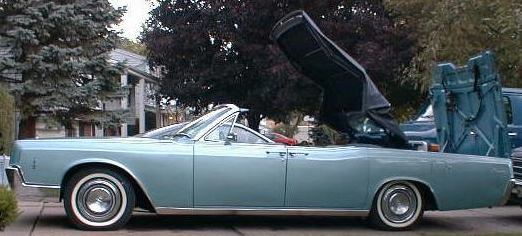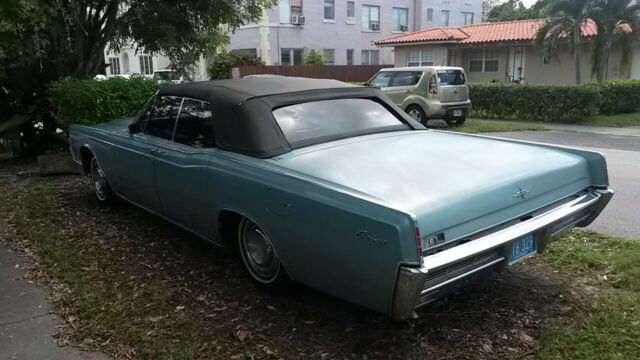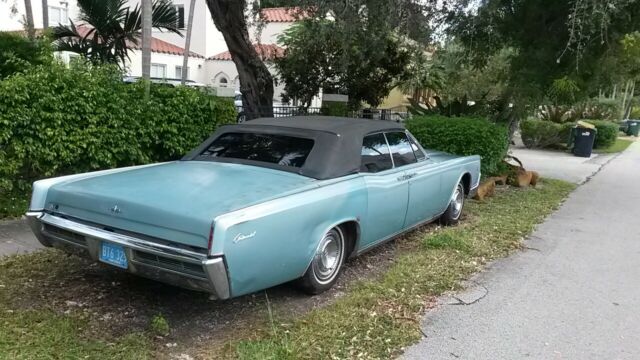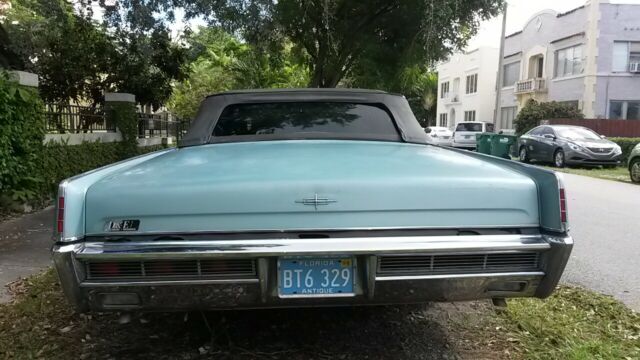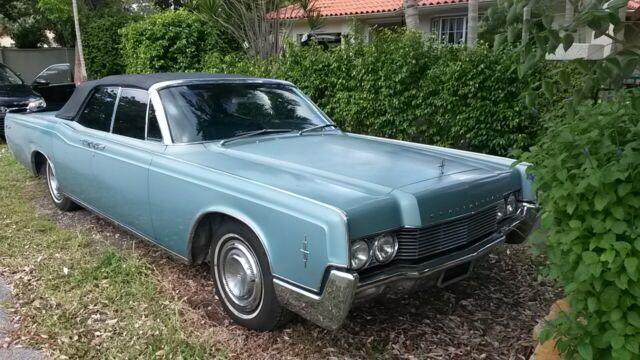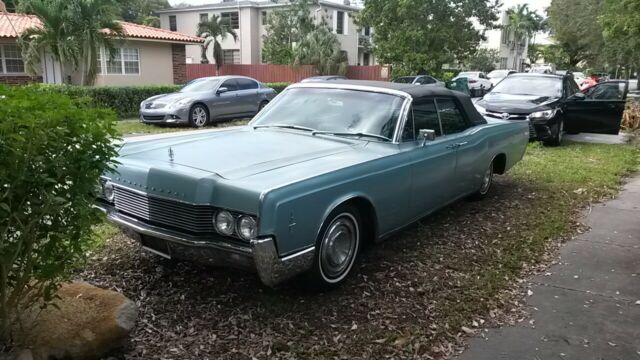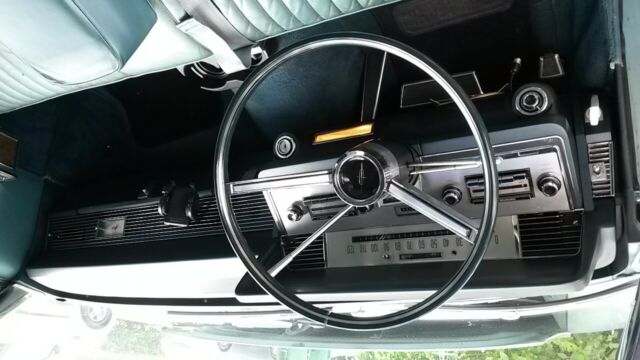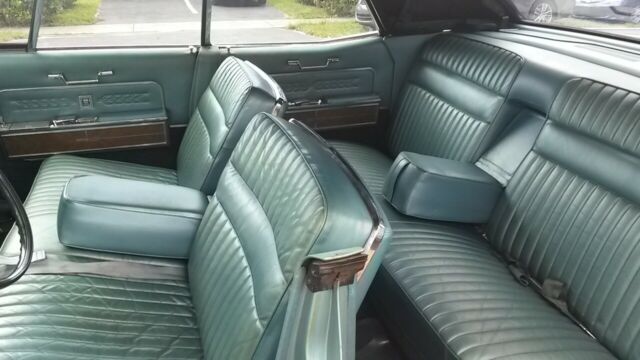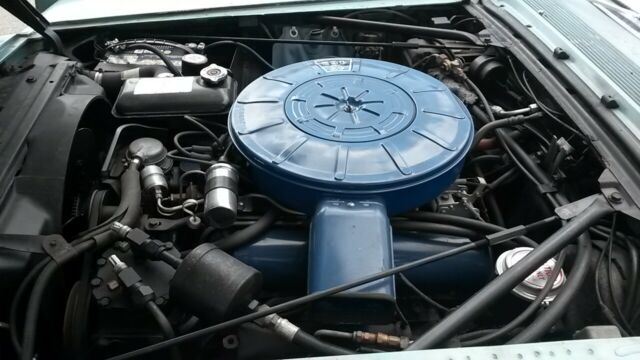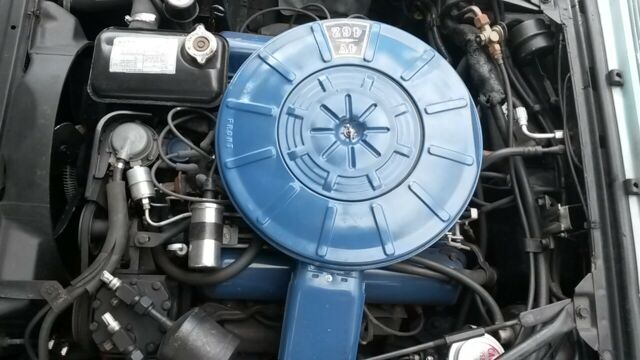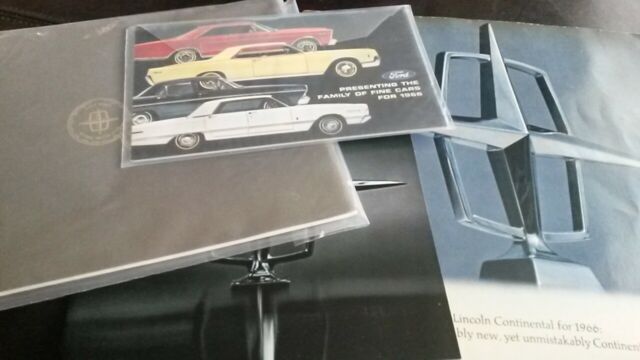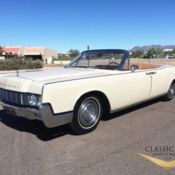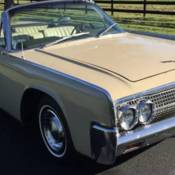LINCOLN CONTINENTAL CONVERTIBLE - ALL ORIGINAL 67K MILES 462 Cu In V8
Technical specifications of Lincoln Continental 1966
| Price: | - |
|---|---|
| Item location: | Miami, Florida, United States |
| Make: | Lincoln |
| Model: | Continental |
| Type: | Convertible |
| Year: | 1966 |
| Mileage: | 67403 |
| VIN: | 6Y86G448250 |
| Color: | Blue |
| Engine size: | V8 462 CuIn |
| Number of cylinders: | 8 |
| Power options: | Air Conditioning, Power Locks, Power Windows, Power Seats |
| Transmission: | Automatic |
| Drive type: | 4Door |
| Interior color: | Blue |
| Drive side: | Left-hand drive |
| Options: | Convertible |
| Vehicle Title: | Clear |
| You are interested? | Contact the seller! |
Description
https://youtu.be/-DXzNgcsP6I1966-1969For 1966, the fourth-generation Lincoln Continental underwent a second mid-cycle redesign. To better compete against the Cadillac Coupe de Ville and the Imperial Crown Coupe, Lincoln introduced its first two-door pillarless hardtop since 1960. The convertible remained offered solely as a four-door. In an effort to increase sales of the five year-old model range, Lincoln reduced the price of the Continental nearly $600 from 1965 while keeping equipment levels identical.[35] The marketing decision proved successful; boosted by the introduction of the two-door body style, the model range increased sales by 36%.[36] While following much of the 1965 restyling (distinguished largely by a new grille and the addition of "Continental" to the hood), the 1966 Lincoln Continental wore an all new body, growing 5 inches longer (implemented primarily in the rear seats to accommodate more leg room), and nearly an inch taller and wider. Curved side glass made its return (with less obvious tumblehome, to increase interior room). To offer an engine sized comparably to those in the Imperial (440 cubic inches in 1966) and Cadillac (429 cubic inches, 472 cubic inches in 1968), the 430 V8 was enlarged to 462 cubic inches. The convertible underwent several equipment revisions for the first time, adding a glass rear window and the top mechanism added a second hydraulic pump for opening the convertible roof and the trunklid (making the two systems separate); hydraulic solenoids were deleted from the top mechanism. The interior underwent several revisions, adding a tilt steering wheel and an 8-track tape player as options.[37] For 1967, the Lincoln Continental was given only minor trim updates, with the deletion of the Lincoln star emblem from the front fenders being the largest change. Several functional changes were made, as Lincoln added a number of indicator lights to the dashboard. Along with an oil pressure warning light, the dashboard was given indicator lights for an open trunk and the cruise control (if on).[38] Following federal safety mandates, lap safety seatbelts became standard equipment, coupled with an energy-absorbing steering column. Following years of decreasing sales, 1967 marked the final year of the Lincoln Continental convertible, with only 2,276 sold.[39][40] After becoming the first four-door convertible sold after World War II, the Lincoln Continental would become the final (as of the 2018 model year) example of its type sold by an American manufacturer. As a result of numerous frame reinforcements (in comparison to the sedan), the 5,712 pound 1967 Lincoln Continental convertible is one of the heaviest passenger cars ever sold by Ford Motor Company.[41] For 1968, several updates were made to the Continental, primarily in response to federal safety mandates. To meet requirements for side marker lights, wraparound lenses were returned to the fenders; the front turn signals were styled similar to the Continental Mark III. The "Continental" wording was removed from the front fascia, replaced by the Lincoln star emblem (as seen on the rear); the hood ornament was deleted, in anticipation of a federal ban on the feature (which never came to effect). For the interior, torso seatbelts were added for the outboard front seats. Intended as a 1968 introduction, the all-new 460 cubic-inch 385-series/Lima V8 was shared with the Mark III, introduced as an early 1969 model.[42] However, the supply of 462 engines was sufficient to last through most of the model year, pushing the introduction of the 460 in the Continental towards the end of the model year.[43] For 1968, Lincoln made several styling changes to the Continental. To meet federal safety standards, the parking lights, taillights, and front turn signals were returned to a wraparound design on the fenders to satisfy Federal standards for side marker lights. For the outboard front seats, shoulder seatbelts were added. The new 460cuin (7.5l) Ford 385 engine was to be available at the beginning of the model year, but there were so many 462cuin (7.57l) Ford MEL engine engines still available, the 460 was phased in later that year.[43] In April, the new Mark III made its debut, as a 1969 model.[42] Total sales would be down to just 39,134.[44] For 1969, few changes were made in the final year of production. To comply with federal regulations, the front seats were updated with head restraints for the outboard passengers.[45] The front fascia was updated, with the grille enlarged for the first time since 1965, with the "Continental" wording returning above the grille. Shared with the Mark III, the 460 V8 became the sole engine for the Lincoln Continental, paired with the Ford C6 3-speed automatic transmission. After a nine-year hiatus, the Town Car name made a return in 1969 as part of an interior trim option package for the Continental. 1966 Lincoln Continental sedan
